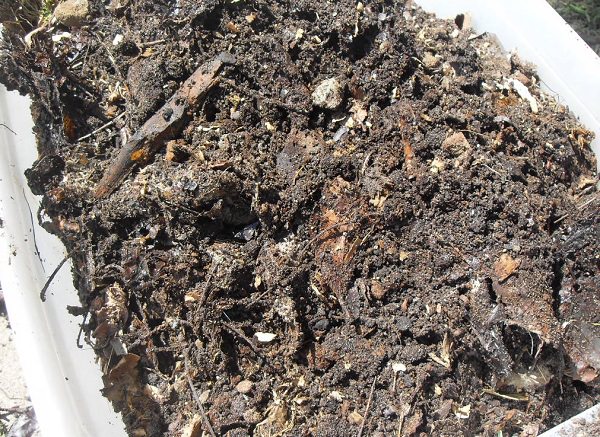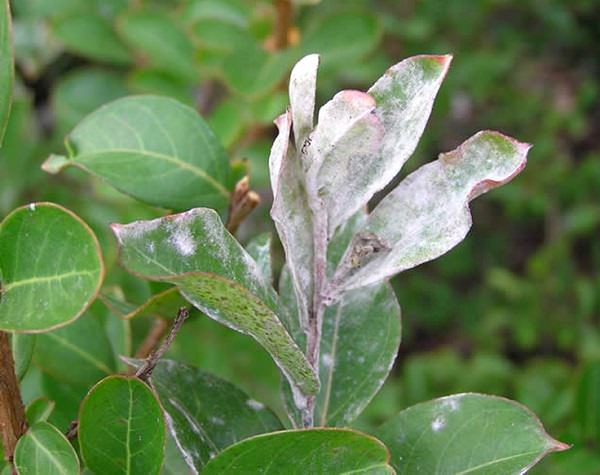It looks like not only us but plants love the coffee as well. If you don’t believe, must see these coffee uses in the garden!
1. Growing Veggies in Coffee Grounds

This aromatic beverage can benefit plants and humans alike. Using coffee grounds in the vegetable garden ensures a slow supply of nitrogen and lowers the pH, thereby contributing to the growth of healthy and robust plants. Till coffee grounds to a depth of 8 inches in the soil for eliminating garden parasites, fungi, and pathogenic worms. Leafy greens and root crops respond favorably to this measure, especially when you mix coffee grounds with soil at the time of planting.
2. For Mulch
Coffee grounds mulching is becoming popular, because of the claims that it deters pests and pets away, prevent weeds and aerate the soil. But you should know, coffee grounds are fine in texture, and their use as mulch works best only in combination with coarse organic mulches. If used alone, in a thick layer, coffee grounds can dry and compact the soil and keep moisture out, not in. Instead of getting the benefit you’ll harm your plants. To use them for mulching, always put thin, half-inch layer of coffee grounds with a layer of coarsely textured organic materials.
3. Enhance Your Carrot Harvest with Freshly Ground Coffee
Growing carrots and radishes in containers or garden? You’ll feel good after learning that the use of coffee grounds can boost their growth. Mixing their seeds with fresh coffee grounds adds extra bulk and makes the small seeds easier to sow, and as a bonus, the strong coffee aroma repels root maggots and other insects during the early stages of growth. To top it all, the grounds also add nutrients to the soil as they decompose. To learn more about this idea, visit Instructables!
4. Fertilize Your Rose Bushes with Grind Coffee Beans
What makes coffee a great addition is the fact it has high nitrogen content, can change the pH (though slightly) to boost flowering, aerates the soil and improves soil texture, thereby creating a favorable medium to support the growth of worms that naturally fertilize the surrounding area. You can also use used tea on roses.
5. Carve out a Protective Circle
Do you often wish you could protect your plants like a shield protects a knight? Are you constantly worried about slugs attacking your blueberries, snails nibbling on your kale or ants munching on your lettuce? Then used coffee grounds is the solution! Scatter them around the plants as slugs don’t like them, a cheap and organic alternative to deter slugs.
6. Prevent Fungal Diseases
The anti-fungal and acidic properties of coffee make it an ideal supplement to ward off pathogenic fungi and stave off the onset of debilitating plant diseases such as coffee rust. As they decompose, coffee grounds carry their own complement of fungal and mold colonies that outcompete external fungi from colonizing and causing disease. In simple words, The natural mold and fungus on the coffee ground can suppress pathogenic fungi, including fusarium, pythium, and Sclerotinia species.
So if you have a handful of coffee grounds to spare, throw them on your eggplants, peppers or tomatoes as these plants are prone to various wilts and fungal rots.
7. Use Coffee Grounds in Vermicomposting
Worms love consuming coffee grounds that much that experts recommend adding them to the composting piles to attract worms. Don’t worry about shaking off the coffee grounds from the filters- worms love filters too. In fact, the used coffee filter acts as a safe and warm bedding for these useful organisms.
8. Stain Your Wooden Garden Benches with Brewed Coffee
Now that’s a cool DIY! If you don’t want to use chemical paint or varnish on the garden bench, you can use the spent coffee grounds to stain your wooden garden benches. In addition to lacking those nasty chemicals that characterize store-bought products, it will bestow a beautiful sepia shade that will enhance the aesthetics of your garden. We found this DIY here!
9. Alter the Color of Your Blooms
The dark brown hue of your morning coffee can actually turn your hydrangea blooms bright blue! This is because coffee grounds have an ability to lower the pH of the soil, and hydrangeas change the color of their blossoms in acidic soil.
10. Keep Pets Away from Garden
Sprinkling used coffee grounds or even solid coffee beans on the soil, over the leaves and around the plants can help keep the pets away. It’s simple, animals have a powerful sense of smell, and while the scent of coffee may uplift your spirits, it has the exact opposite effect on your furry little, hyper-sensitive feline. For enhanced results, spread a mixture of coffee grounds and orange peels.
11. Coffee Grounds in Compost

Composting with coffee serves as a nice way to recycle something that would otherwise end up neglected in a landfill or trash can. According to a lab report posted by The Sunset, used coffee grounds provide phosphorus, potassium, magnesium and copper, and as they decompose, they release these minerals to the planting area. Also, by creating a slightly acidic, nitrogen-rich medium, they bolster the vigorous growth of plants. Just keep in mind that if you’re using coffee grounds in your compost pile, you also need to use some brown compost material to balance out the overall pH and texture.
12. Make A Foliar Spray
The efficacy of foliar feeding may be a subject of debate, but you can never go wrong with a foliar spray made by steeping used coffee grounds. Also, this organic foliar spray has a lingering coffee smell that deters potential pathogens, so spraying it on leaves makes them less appealing to invaders. To make this spray– Soak about a half-pound of spent grounds in five liters of water and spray the solution onto your plants; paying particular attention to the underside of the leaves.
13. Fertilize Your Plants with Brewed Coffee
Acid-loving plants, some herbs, vegetables, etc. will thank you for applying coffee. Remember, only fresh; unused coffee grounds can raise the acid content of the soil and enrich it with nitrogen (the micronutrient that promotes the formation of green and sturdy stems). Used coffee grounds have a very little potential of raising pH level and do nothing to improve the acid levels of the soil instantly.
14. Grow Oyster Mushrooms
Growing mushrooms in coffee grounds is easy. All you need is cardboard, and some spent coffee grounds as a medium. Corrugated cardboard acts as the perfect barrier to prevent the entry of competing molds and bacteria while providing sufficient aeration for the mushroom roots to flourish. Coffee, on the other hand, provides all the requisite minerals to aid the growth of mushroom spawns. Learn how to grow mushrooms in coffee grounds in this DIY.
15. Heat up Your Compost Pile with Coffee Grounds
Compost that fails to heat up to appropriate temperatures ends up as a noxious mess or a pile that doesn’t seem to break down at all. Adding coffee grounds can help in this regard; it helps to maintain the necessary high temperatures for creating a rich, powerful compost that can kill weeds, vegetable seeds and harmful pathogens with remarkable ease. Studies have found out that addition of no more than 20% coffee grounds to the compost can help it attain a reasonable temperature.
16. Coffee is Good for Your Magnolia Tree
Evergreen trees like spruce, pine and magnolia seem to benefit from the slightly acidic soil. And coffee (grind or ground) helps to alter their pH to their liking. However, it’s recommended that you do a pH test of your soil before going ahead. Composting the grounds before using them directly in the garden is also a good idea.
Also, check out this informative PDF from Washington State University to learn more coffee uses in the garden in detail!
17. Prepare Side-Dressing for Voracious Feeders
Any DIY organic fertilizer has to include a primary nitrogen component. Most of the times, it’s seed meal, but if you think about it, coffee beans are, after all, processed seeds. So, obviously, they are rich in nitrogen and even have an apt carbon to nitrogen ratio that is perfect for soil and plant nutrition. This makes them a valuable side-dressing for heavy feeders like fruiting vegetables (tomatoes and squash) and the leafy ones as well while they are young.
18. DIY a Gardener’s Soap
Prepare a gardener’s soap from used coffee grounds (1/3 cup) and melted glycerin soap bar (1) and cool this mixture to reshape the soap for exfoliating your dirt-caked hands.

















